Well in the house - ease of use
Without water, no land can be called fertile and suitable for exploitation by man. That is why the well has become such a popular source of water in the modern world, which can be equipped without any problems almost anywhere on the site. In this article we will tell you about the ease of use of the pump, located directly in a residential building.

A little background
Previously, many residents of our vast country sought to acquire a plot of land for growing crops, and everyone literally rushed to the country at the end of the working week, where they combined outdoor recreation with gardening works.
Now, wealthy citizens prefer to buy land for building country houses, where they live permanently away from the noise and gas pollution of large cities.
The main drawback of suburban and dacha settlements is still a significant distance from centralized ones:
- Plumbing.
- Sewerage.
- Power supply.
Everyone, by virtue of his preferences and financial capabilities, in his own way solves the problems of supplying his own home with the basic vital resources.
Autonomous water supply
In this article we will focus on water supply of a country house. The least costly solution to this problem, in terms of material resources, effort and nerves is the drilling of wells in the house.
Yes, we did not make a reservation, it may be a well under the house or near it in the adjacent territory. The device of autonomous water supply of your possessions in such a way as drilling a well in a house or on a site, of course, will require certain knowledge. This is true in the case of doing the work with your own hands and when referring to specialists.
Tip! A “savvy” customer is much harder to fool. And we all know that unscrupulous contractors, alas, have enough in the construction industry.
What the owner of a country house needs to know before the well for a country house becomes a reality:
- What are the wells.
- The service life of the equipment.
- Conciliation and authorization actions (documentation).
- Permissible distance from home to well.
- Does the well tax in a private house pay?
We will not talk about whether the well is good under the house - the pros and cons, we hope you understand and can make the right conclusion. The information below will only help you take a step in the right direction.
For most, we are sure, an important issue is the price of drilling and all related materials and equipment. However, it is necessary to clarify it directly with the region in which you live.
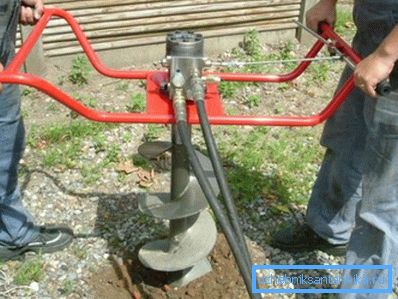
Varieties of wells for water
Today there are two types of wells:
- Sandy, named in the same way, because the water in them comes from a sandy aquifer, located at different depths in different areas. This may be 10-30 m, and in some regions, and much more up to 45-80 m.
A sand well in a private house is necessarily equipped with a filtration system. Otherwise, the pump, which supplies water to the surface, will quite quickly become inoperative and will require repair or replacement.
Note! As a rule, a sand well for the house is drilled and equipped for two to three days. If the sand well is operated regularly, it will last up to 10 years, with irregular (seasonal) use, the service life may be reduced.
- Artesian filled with limestone layers and reach a depth of 30 to 200m. Water from an artesian well does not require additional filtering. Unlike water from sandy wells, artesian water is crystal clear and can be used for drinking in its original form.
The cost of drilling and equipping such a well is, of course, much more complicated and expensive. The duration of the work will be from 3 days to a couple of weeks. However, this artesian well will delight you with clean water for up to half a century.
But at the same time, the installation of an additional filter still does not hurt, you can even add saturation with useful minerals.
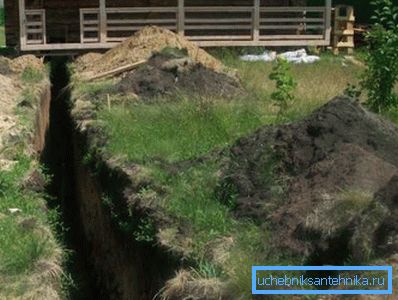
Note! It is better to entrust the drilling of an artesian well at a great depth to specialists, since here you will need heavy, complicated equipment and skills of such work. In addition, artesian wells are subject to mandatory licensing.
Selection of the drilling site
The first stage in the way of autonomous water supply of your home is the decision on the place of drilling a well. Initially, we will look into the question of whether a well is better inside or outside the house.
The advantages of arranging a source of water supply from inside the house building include the following:
- A well in the basement of the house will significantly facilitate and cheapen the process of creating the entire water supply system:
- You will need fewer pipes.
- The internal pipeline does not need serious warming.
- There will be no need for a device of the pit - the caisson.
The disadvantages of this method are hidden in the limited space in the basement of the dwelling, which creates inconvenience for:
- Conduct preventive measures.
- Dismantling - mounting the pump and other equipment.
In addition, the process of maintenance and repair of wells is quite time-consuming and dirty process.
Note! When drilling wells located inside the premises, the contracting organizations refuse to give a guarantee on the well with difficult access to it. Experts recommend setting up a well outside the home.
If you are still inclined to the location of your well in the basement area of the future home, try to meet all the necessary conditions:
- It is advisable to drill the well on a “bare” construction site before the foundation is laid. Best of all is to design it on the drawing of the future structure.
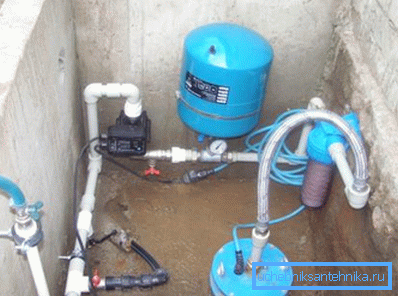
Tip! If you decided to locate a well in the basement of a dwelling after the foundation was erected, do not drill less than one meter from the base.
- After drilling, prior to the erection of the bearing and enclosing structures, at least 1-2 months of intensive well operation should take place. This is necessary to monitor the process of the well in the operating mode, the occurrence and elimination of possible deficiencies of drilling.
- The well should not be located under the living room, as well as under the kitchen and bathroom. As we already mentioned, the process of servicing a well is associated with a lot of dirt. Therefore, the priority will be the location of the water source under the technical premises.
- There must be enough space around the well for maintenance or conversion, which may be associated with the installation of bulky scaffolding for the lifting mechanism.
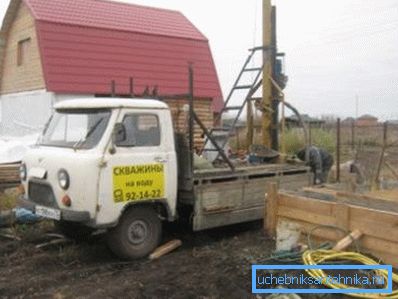
Note! With the planned drilling of very deep (from 100 meters) artesian wells, it is strongly recommended to move them beyond the housing construction, thus providing uncomplicated access for heavy drilling equipment. The warranty service life of such wells without repair is very long, but it is better to insure against possible surprises.
Moreover, if you have planned the installation of the well behind the section, do not forget to prepare all the necessary documents; at a minimum, you will need permission.
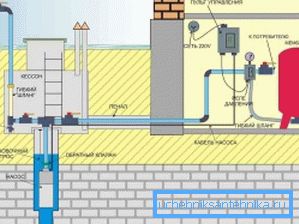
Useful information
Finally, a small instruction on the location of wells in relation to other objects. Since we are going to use the water from the well for drinking and cooking, we should first of all worry about its cleanliness.
In this regard, SNiPs “Water supply.
External networks and facilities "and" Internal water supply and sewerage of buildings "clearly regulate the conditions of the device and the location of potential sources of contaminated drinking water from a well:
- Sewerage.
- Cesspools
- Septic tanks (septic tanks) - facilities for water treatment with a capacity of up to 25 m3 per day.
- Wells.

Note! All underground "structures" should also be built after the construction of the pipeline, or at the same time, trying to carefully protect them from each other.
Here there is such an important concept as a hydraulic connection between the soil, to the depth of which a well was drilled (up to the aquifer) and the soil, which is a filter for treated effluents or possible sewage penetration (in case of an accident on sewage networks).
If there is a hydraulic connection, the recommended removal of pollution sources from the well is 50m, in the absence of -30. Also, SNiP provides recommendations for the removal of wells at a certain distance from gas pipelines, electrical communications.
And yet - if any communications lie in close proximity to the water supply, they should be isolated and hidden in special corrugated pipes. This, first of all, concerns the electric wires that run underground.
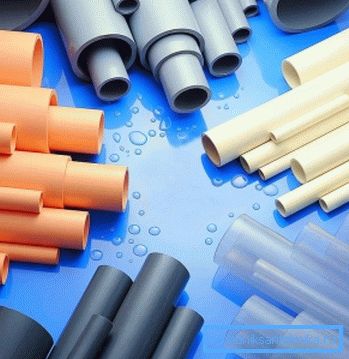
Conclusion
As you can see, in order to achieve comfort in the house, you need a little effort. You should not save on work, it is better to entrust it to professionals who can provide a guarantee on the result. Even if you overpay a little at the initial stage, you will end up with reliable equipment and a durable well, which you will not have to repair within 10-15 years.
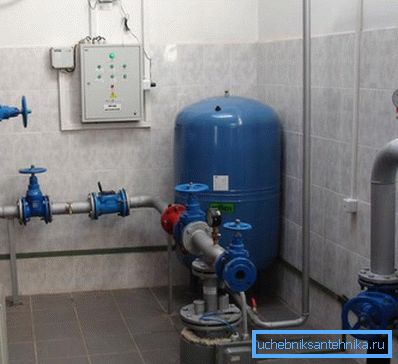
In the presented video in this article you will find additional information on this topic.